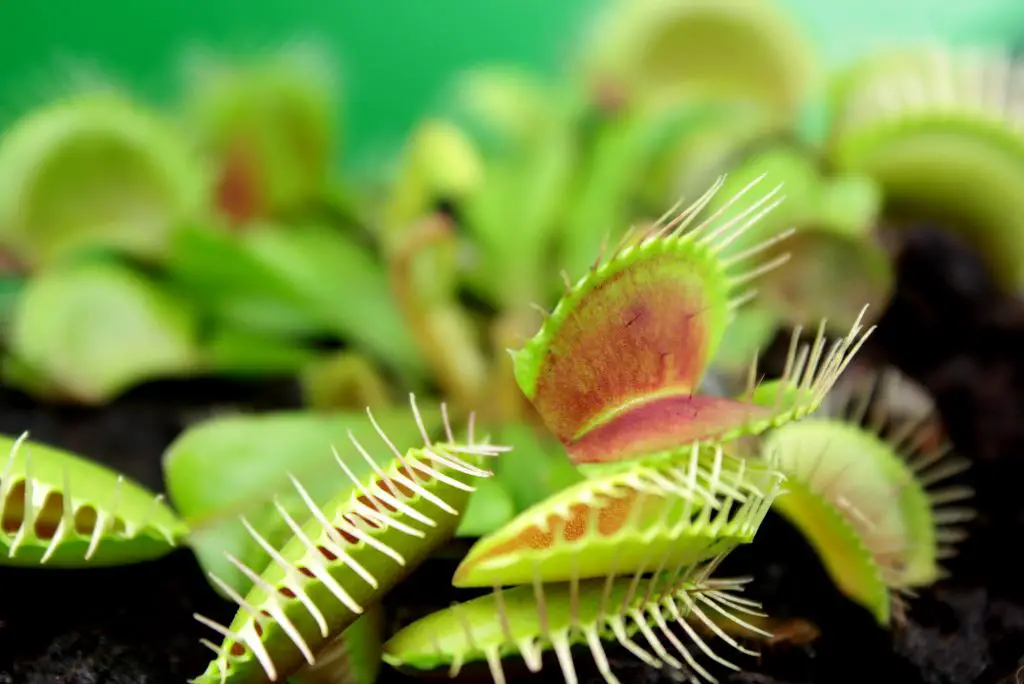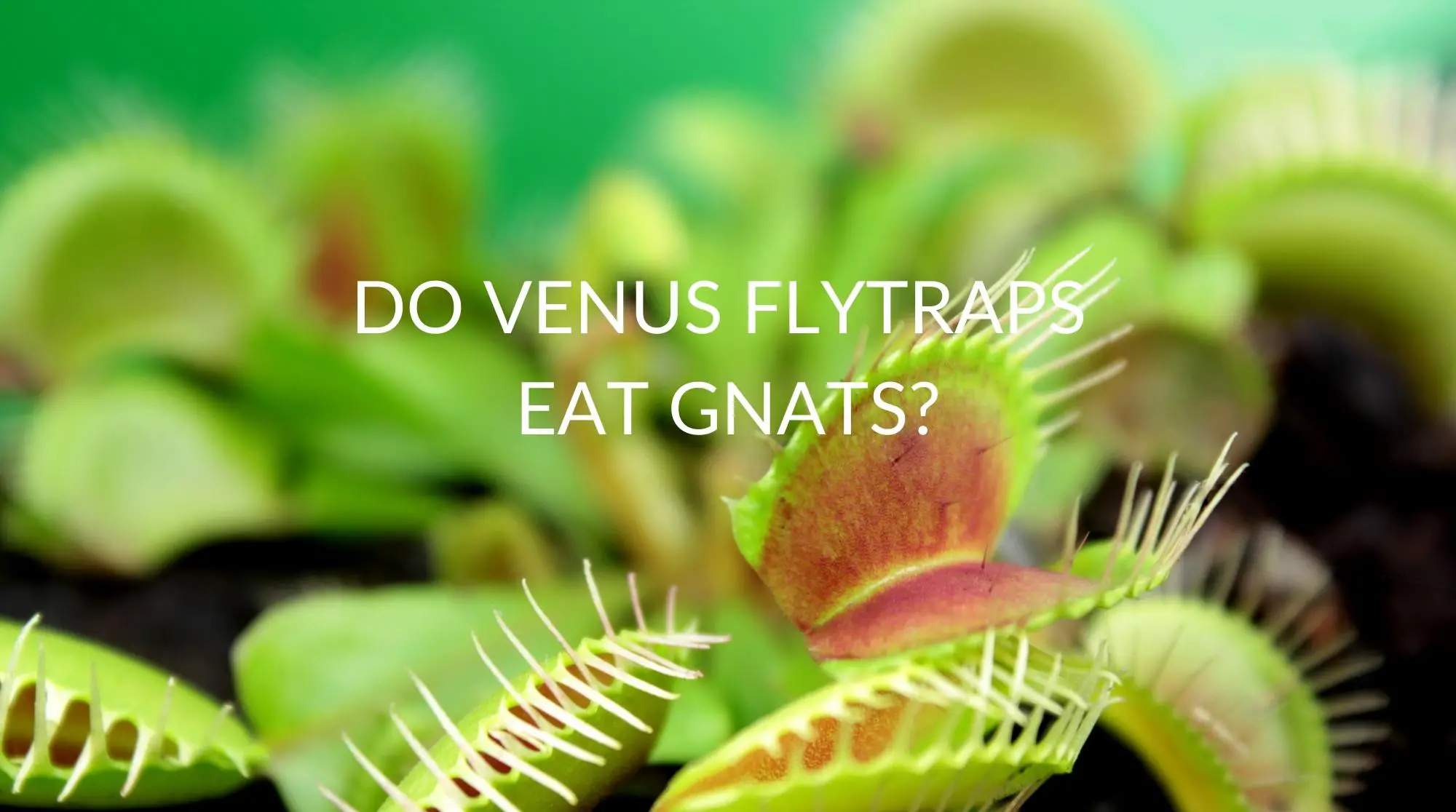Venus Fly Traps are known for their unique ability to catch insects using their so-called snap traps. When people come across these plants, one thing that comes to mind is whether they can be effective against one of the most common pests plaguing the garden: Gnats. So, in this article, we will discuss how well these plants hold up against gnats.
Also, keep reading to find out some plant alternatives to choose from if you are suffering from a gnat or any pest infestation.
Do Venus Fly Traps Eat Gnats?
Venus Flytraps have a good reputation for catching several types of insects. They are capable of eating gnats and other pesky crawling and flying critters in your garden. But does this mean that they can gnaw at all the gnats in your garden? The simple answer is no. Although they can help with gnats infestations, they don’t just eat any kinds of insects.
Gnats are usually associated with fungus gnats, a common houseplant pest. They are fly-sized insects that commonly attack indoor plants. These pests are drawn to overly moist or waterlogged soil. So, if your plant is usually soggy due to overwatering, your plant is at risk of getting infected with fungus gnats.
According to the United States Fish & Wildlife Service, Venus Flytraps’ diet consist of 33 percent ants, 30 percent spiders, 10 percent beetles, 10 percent grasshoppers, with fewer than 5 percent accounting for flying insects. This shows that even though Venus fly traps consume gnats, they don’t make up a huge part of their diet. When these plants are grown indoors, their behaviors can change, but not completely.

Venus Flytrap As Pest Control
Just like other plants, Venus Fly Traps get their nutrients from the soil. But to supplement their big appetite, these carnivorous plants consume a wide variety of insects and arachnids. Ants, grasshoppers, gnats, and spiders are all prey to this plant. This exciting characteristic of Venus Fly Trap attracts many plant lovers to use this plant as a protection against different pest troubles, including gnats infestations.
But if you’re thinking of using your Venus Flytrap as your main line of defense against pests in your garden, you might get disappointed. Here are the reasons why.
Venus Flytraps Are Too Small
Venus Fly Traps are cute little plants that grow around 5-6 inches, with their snap traps usually measuring up to a “whopping” 1.5 inches. Due to their size, they also have a small appetite for insects, despite being well-known for it. Generally, Venus Flytraps only need to eat once every two weeks. And it’s also important to note that they aren’t capable of consuming prey that is bigger than them.
Venus Flytraps Have Limited Number Of Snap Traps
If you plan on using Venus Flytraps for pest control, thinking that it would devour every single prey within its vicinity, then you will be quite disappointed. As mentioned above, Venus flytraps only need food once every two weeks. Once the prey has been captured, they would refocus their energy into digestion rather than actively waiting for another one to consume. Although there isn’t much risk in overfeeding, they still consume way fewer insects compared to other carnivorous plants.
Wondering whether Venus Flytraps close at night?
There Are Better Carnivorous Plants To Use
Despite being known as the most popular carnivorous plant, Venus flytraps are not the best choice to use for pest control. As mentioned above, they don’t eat flies or insects as much as expected and may take weeks or months before they have their next meals. So, instead of using Venus Flytraps as a solution to pest infestations, it is better to use other carnivorous plants like Butterworts, Sundews, Nepenthes Pitcher plants, and Sarracenia.
How Do I Attract Gnats To My Venus Fly Trap?
Venus Flytraps do not need any help from humans in becoming effective in catching their prey. Due to their nature, Venus flytraps can easily lure insects, including gnats, into their snap traps. They do this through the attractive reddish lining in their leaves. According to a research article from the National Library of Medicine, they release nectar with an evaporative blend of scents similar to ripe fruits and flowers.
As hungry insects searching for their meals pass by this plant on standby, they get attracted to Venus flytraps’ released fruity smell. They would land on the plant’s snap traps, thinking that they hit the jackpot. But little did they know, they would be the ones to go. As the snap trap’s trigger hairs called trichomes detect the steady movement happening, they get stimulated. In a fraction of a second, the snap trap shuts.
The digestion process then starts in the next couple of minutes and continues for days after the prey gets captured. It will take about two weeks for Venus flytraps to fully digest their meals and reopen to get rid of any exoskeletons remaining.
Curious as to what will happen when you put your finger in your Venus flytrap? The answers may surprise you!
What Plant Eats Gnats?
Venus flytraps may be the king in the world of carnivorous plants, but there are much better plants to use if you have a fungus gnat infestation. Here are three great examples of carnivorous plants capable of eating fungus gnats, as well as other pesky insects.
Sundews (Drosera)
Sundews or Droseras are easy to cultivate carnivorous plants which are popular for the sticky hairs on their leaves. These flypaper plants have long tentacles extending from their leaves, with some sticky glands on each tip. These said glands are responsible for producing nectars that lure, capture, and eventually digest the prey. Another great thing about Sundews is that they can easily entrap multiple insects simultaneously. Pretty wicked, right?
Butterworts (Pinguicula)
Butterworts may look completely harmless, but don’t let their innocent appearance fool you. These green plants are actually very effective at catching insects of many kinds. They have a rosette of flat, sticky leaves that, just like sundews, attract, trap, and digest the unsuspecting insects that they catch.
Tropical Pitcher Plants (Nepenthes)
Tropical pitcher plants, also known as Conclusion
If you have a severe infestation of gnats, your best solution would still be the use of pesticides. Aside from buying them from stores, water, vinegar, and soap mixtures can also do the trick. Many plant owners also find the use of sticky flypaper traps to be very effective.
It is important to remember that if you have a gnat infestation, Venus flytraps can also end up being infected instead of solving the problem. So, make sure that your soil doesn’t get waterlogged to prevent fungal growth and keep your Venus Flytrap healthy.
Overall, Venus flytraps may not be the most effective in solving your gnats infestation, but they will always be effective in bringing happiness to every house!

